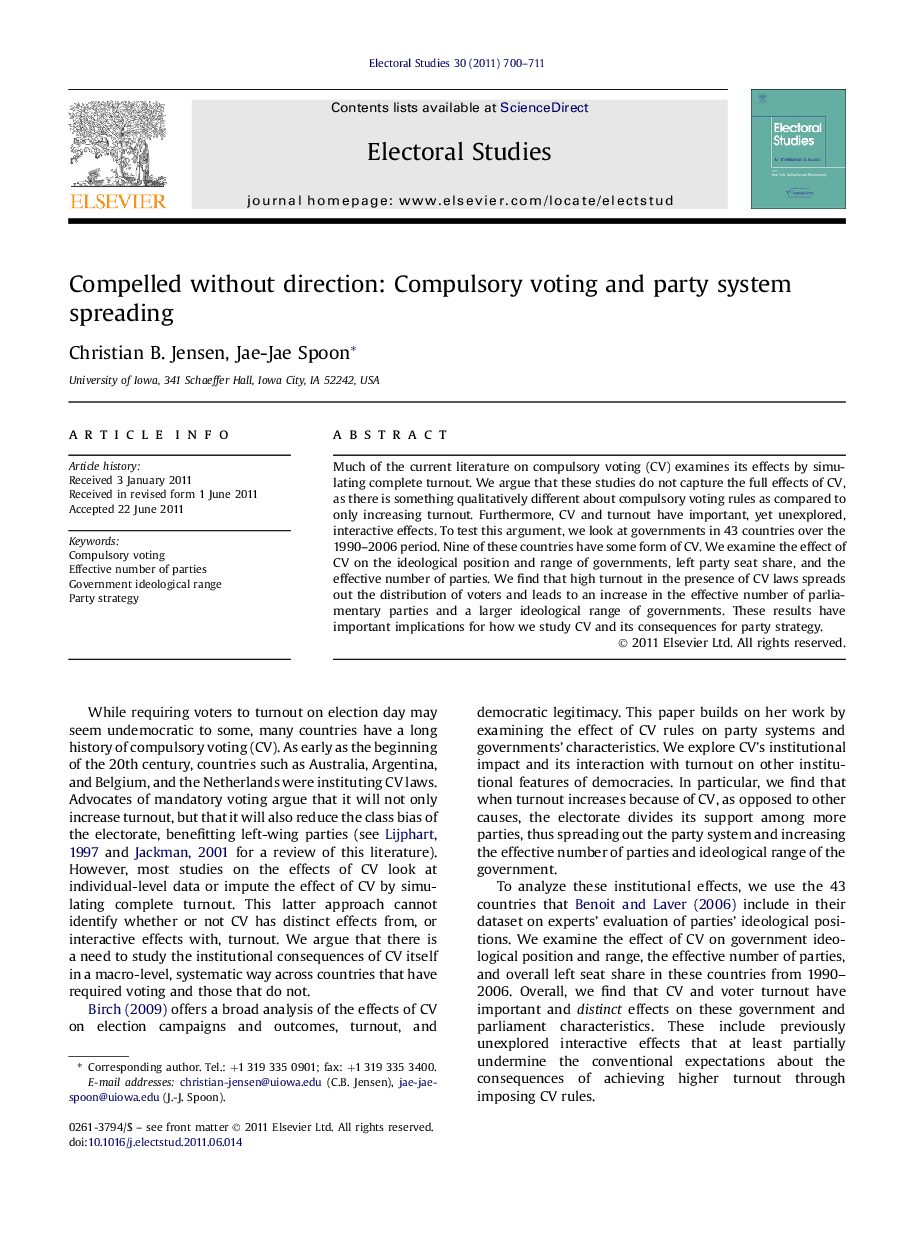| Article ID | Journal | Published Year | Pages | File Type |
|---|---|---|---|---|
| 1052266 | Electoral Studies | 2011 | 12 Pages |
Much of the current literature on compulsory voting (CV) examines its effects by simulating complete turnout. We argue that these studies do not capture the full effects of CV, as there is something qualitatively different about compulsory voting rules as compared to only increasing turnout. Furthermore, CV and turnout have important, yet unexplored, interactive effects. To test this argument, we look at governments in 43 countries over the 1990–2006 period. Nine of these countries have some form of CV. We examine the effect of CV on the ideological position and range of governments, left party seat share, and the effective number of parties. We find that high turnout in the presence of CV laws spreads out the distribution of voters and leads to an increase in the effective number of parliamentary parties and a larger ideological range of governments. These results have important implications for how we study CV and its consequences for party strategy.
► Compulsory voting is qualitatively different than complete voter turnout. ► Compulsory voting and turnout have important interactive effects. ► The interaction of compulsory voting and voter turnout increases ENPP. ► The interaction of compulsory voting and voter turnout increases government range.
